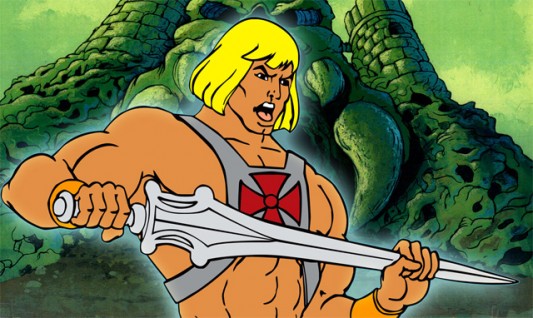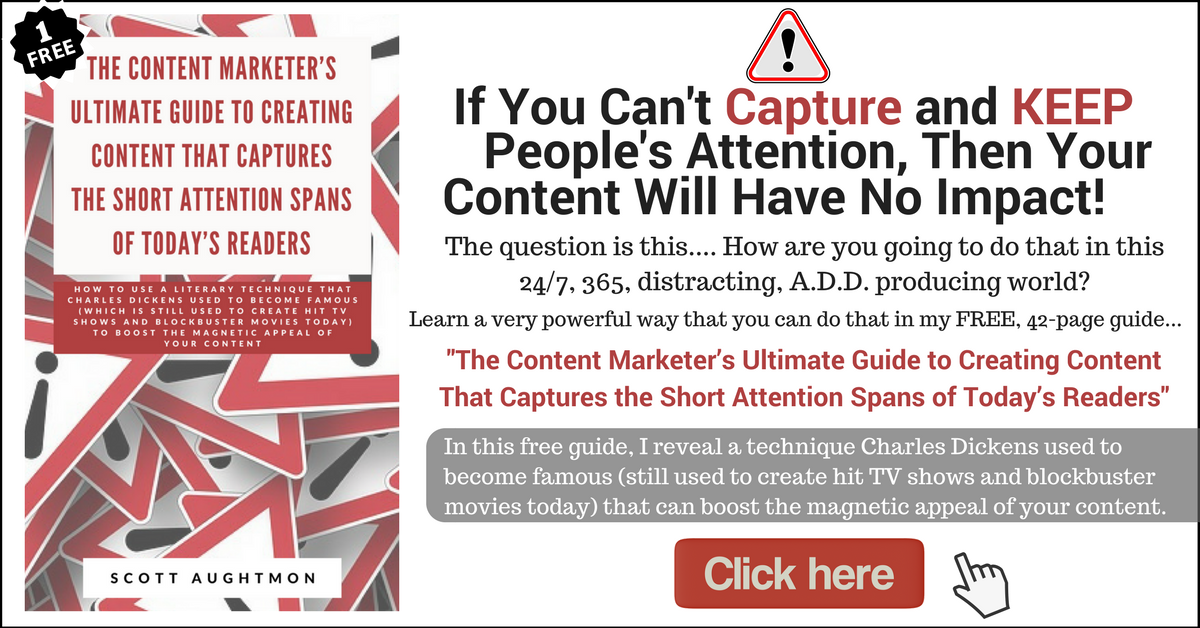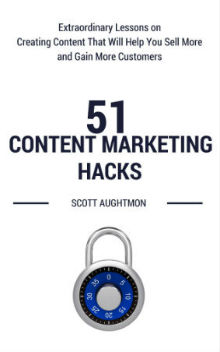I recently found a new reality show that I like. It’s called Comic Book Men.
Comic Book Men is a reality television series on AMC. It’s set at Kevin Smith’s comic book shop, called Jay and Silent Bob’s Secret Stash, which is located in Red Bank, New Jersey.
If you want to know what the show is like, it’s kind of like Pawn Stars for the comic book world. (Make sure you check out my previous content marketing lessons from Pawn Stars called Content Marketers: How To Exploit Patterns To Effortlessly Produce Powerful Content .)
Anyway, it was during one of the Comic Book Men episodes that I learned about He-Man’s content marketing secret.
If You Don’t Know Who He-Man Is
First of all, for those who don’t know who He-man is, he was the main character of an animated series that was released in 1983. Here’s the intro to the show…
The Show’s Content Marketing Secret
I really liked that show when I was young and I never would have guessed this secret about the show.
The He-Man series was created solely to sell the action-figures.
You see, Mattel’s CEO Ray Wagner make a huge mistake.
He rejected the chance to produce action figures for Star Wars, because he didn’t want to pay the $750,000 license that was required upfront.
After the commercial success of the Star Wars trilogy and its related merchandise, Wagner realized his mistake.
Mattel tried and tried to bounce back from that mistake.
They tried to make their own successful toy-lines, but after several unsuccessful attempts they still couldn’t capture the public’s imagination or impact the toy market.
How Roger Sweet Created He-Man
A guy named Roger Sweet, who was a lead designer working for Mattel’s Preliminary Design Department during most of the 1970s and 1980s, decided he would try to create the next hit action-figure.
Here is how Sweet describes it in his book Mastering the Universe: He-Man and the Rise and Fall of a Billion-Dollar Idea…
“The only way I was going to have a chance to sell this [to Wagner] was to make three 3D models – big ones. I glued a Big Jim figure [from another Mattel toy line] into a battle action pose and I added a lot of clay to his body. I then had plaster casts made. These three prototypes, which I presented in late 1980, brought He-Man into existence. I simply explained that this was a powerful figure that could be taken anywhere and dropped into any context because he had a generic name: He-Man!”
He-Man was originally presented to Mattel executives in the form of a He-Man Trio: three three-dimensional prototype models depicting He-Man as a barbarian, a soldier and a spaceman.
Out of the three concepts, the barbarian version was chosen to be the basis of the toy-line.
How Mattel Used Content Marketing To Sell He-Man
From the very beginning, Mattel used content marketing to promote their He-Man action-figures.
They started out with mini-comics that were released with the first series of toys. Through this comic series they began to develop the storyline for the action figures.
Mattel must have realized that the Star Wars movies served as a powerful vehicle to promote the Star Wars toy-line, because it wasn’t long until they decided to come up with an animated series based on He-Man.
He-Man And The Masters Of The Universe
Mattel partnered with Filmation animation studio to make the series.
Filmation then conceived and developed the back-story for the He-Man figures.
Later Mattel and Filmation both went and pitched the idea to the ABC network.
But ABC wasn’t impressed. They turned them down.
The only way the series made it on the air in September 1983 was through barter syndication (a program distribution method in which the syndicator retains and sells a portion of the show’s advertising time.).
But the risk paid off for Mattel.
It became the first syndicated show to be based on a toy. The show was a huge success.
By 1984, it was seen on 120 U.S. stations and in more than 30 countries.
Not only was the series a success, but the sales of the toy-line exploded.
In 1986, at the its height of success, it was pulling in $400 million in profits from US sales alone.
3 Content Marketing Lessons You Can Learn From Mattel
1. Content marketing increases exposure and sales.
The key thing that made the He-man toy-line a success compare to Mattel’s other failures was that it used content marketing to promote it.
Repetitive exposure is one of the keys of success for any business.
Content marketing is a great way for you to get this exposure while building the “know-like-trust” factor in your prospects.
2. When creating content marketing make sure it is helpful or entertaining to your core audience.
Mattel knew that they had to create fun and imaginative content if they wanted kids to actually watch the show and in turn want to buy their toys.
Boring content is a waste of your time. No one will read it. You won’t get any exposure or sales from it.
But entertaining and helpful content will produce results – if you keep planting and watering those seeds.
Want proof?
Marcus Sheridan started River Pools and Spas in 2001.
He decided to post content that was helpful for his core audience. He just began to blog the answers to the questions he repeatedly received from prospects. Questions like: “How Much Do Inground Pools Cost? or “Which is Best: Fiberglass, Concrete, or Vinyl Liner?” (You can see the type of content he wrote here.)
How successful was this content?
His pool company grew to be one of the largest of its kind in the world.
3. You don’t have to create the content to use content marketing.
Mattel didn’t try to create an animated series. Instead they partnered with Filmation.
You can do the same.
You can hire a freelance writer to create content for you.
You can go to a site like Writtent.com and hire one of their writers.
You can probably even find some local, free or low cost writers to create content for you in exchange for the exposure.
Content marketing can be very powerful force.
If it can help a toy company and a pool company, then it can help your company.
The key is in creating engaging content and using it correctly.
If you would like to learn how to create engaging content, then make sure to check out the “21 Types Of Content We Crave” webinar recording below.
Additionals Sources: Wikipedia (He-Man, He-Man And The Masters Of The Universe, and Mastering The Universe)
AFFILIATE LINK DISCLAIMER: I almost always uses affiliate links to Amazon, but I never mention a book simply for the commission. (It’s not big enough to be worth that.) I just think that Amazon might as well cover an occasional Starbucks drink for me in exchange for sending people to buy books from them! ![]() **If it bothers you that the links above are affiliate links, then copy the title above and go to Amazon.com here. No commission will be given if you use the link in the previous sentence.
**If it bothers you that the links above are affiliate links, then copy the title above and go to Amazon.com here. No commission will be given if you use the link in the previous sentence.
“21 Types Of Content We Crave” Webinar:
Why Boring Isn’t Memorable And What You Must Do About It
Related Posts
- How George Lucas Keeps Star Wars Popular By Using Content Marketing (RecessionSolution.com)
- 42 Hot Tips for Compelling Content Marketing This is a great list! And I am honored to have my “21 Types Of Content We Crave” post included on the list (ContentMarketingInstitute.com)
- May The Force (of Content Marketing) Be With You: How ABC Used Extreme Makeover To Promote Lucasfilms (RecessionSolution.com)








